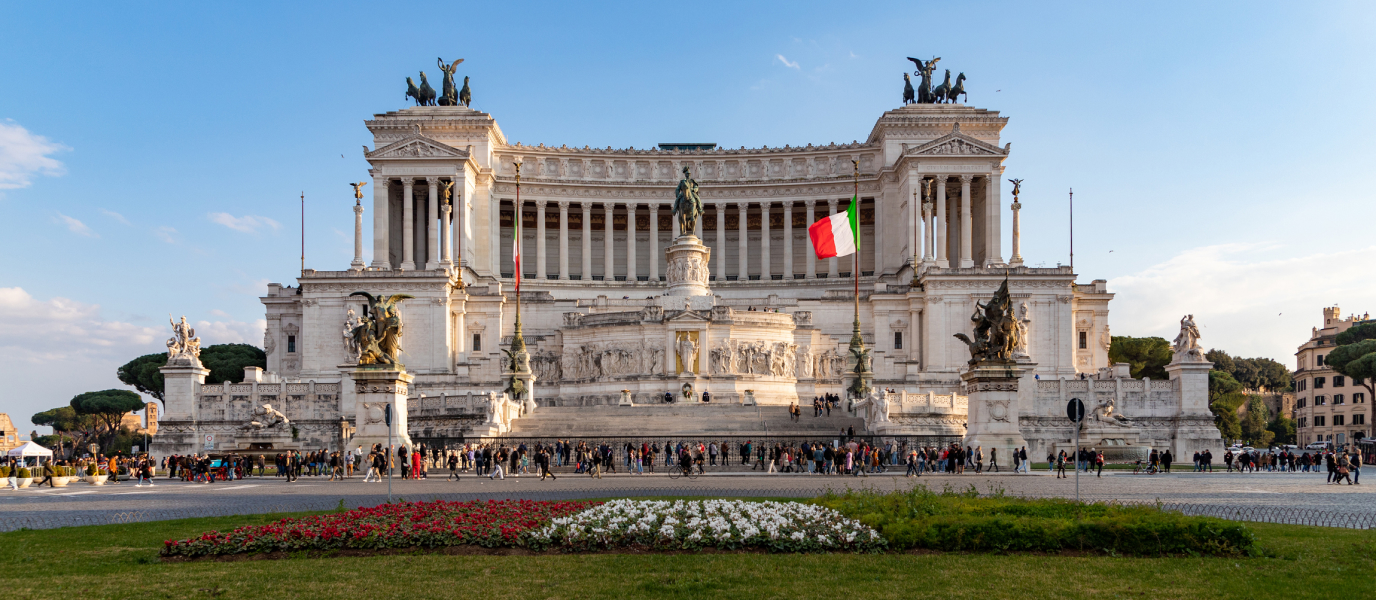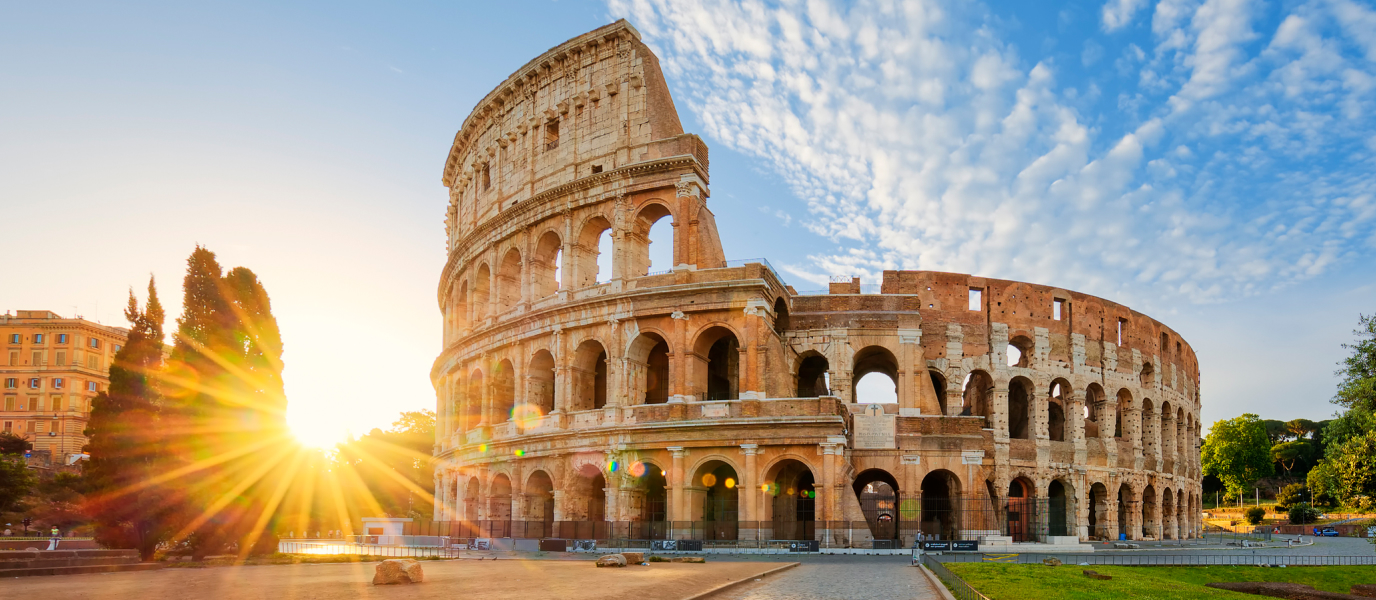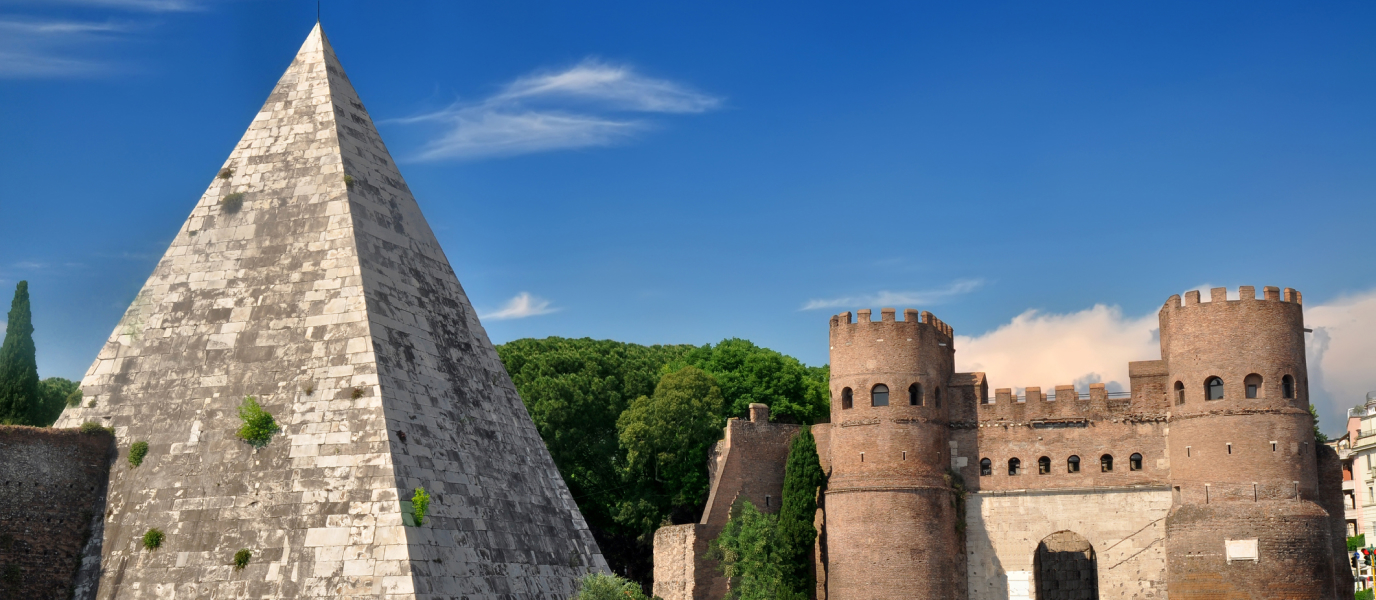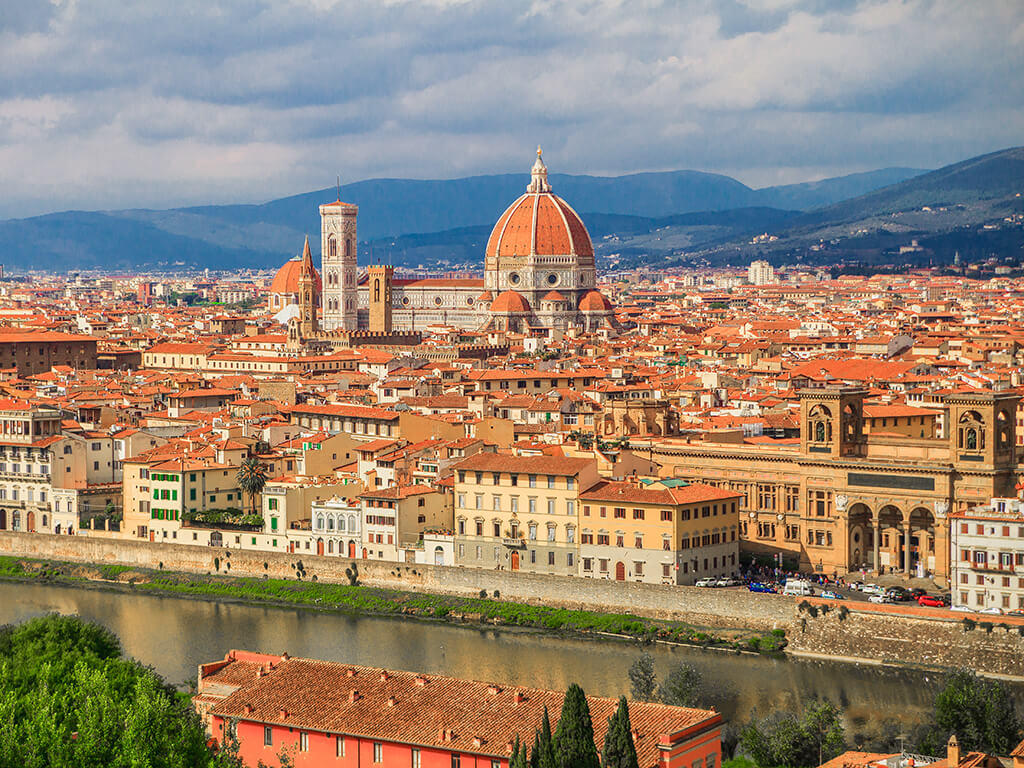There is a lot to see in Rome but the Victor Emmanuel II Monument is definitely one of the spots that the thousands of tourists who flock to the capital city of Italy each year photograph the most. It’s in a beautiful part of Rome and it is the dominant feature in Piazza Venezia. The huge marble monument known to many as the Altar of the Fatherland is seventy metres tall and 135 metres wide. You simply cannot miss it.
It was designed in order to pay homage to one of the leading figures in the unification of Italy: Victor Emmanuel II. An equestrian sculpture of Victor Emmanuel takes pride of place whilst two imposing chariots guided by the goddess Victoria dominate the portico from on high. Below, you will find the Central Museum of the Risorgimento, the Tomb of the Unknown Soldier and a terraced area from which you can enjoy spectacular views of the city.
However, the construction, conceived by Giuseppe Saccani in 1885, was not initially received with open arms. From the moment it was built, it was harshly criticised by many. This was hardly surprising given that its construction implied partial demolition of other buildings in one of the last Renaissance era squares in Rome at the time. Indeed, Palazzio Bolognetti-Torlonia, was completely destroyed, while the so-called Palazzetto (a quadrangular section of Palazzo Venezia) was thankfully transported stone by stone to the other side of St. Mark’s basilica.
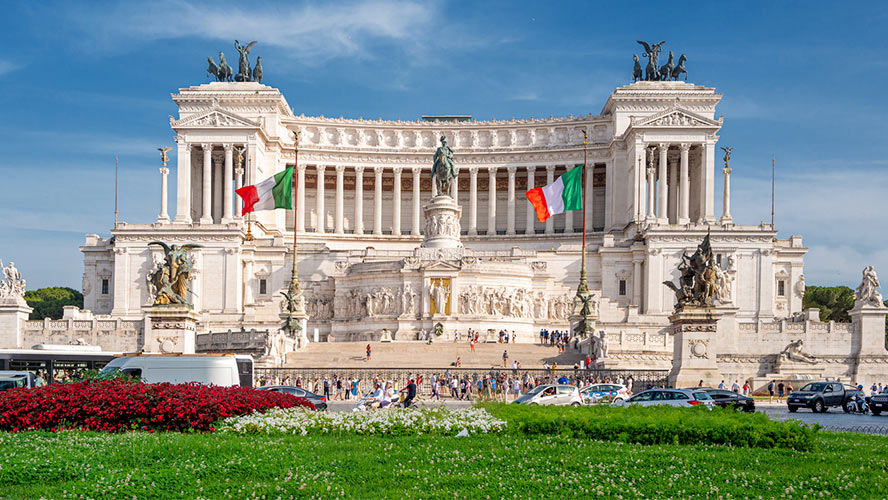
The Victor Emmanuel II Monument: an incredibly large construction
Work building the memorial began in 1878 following Victor Emmanuel II’s death and the unification of Italy. It was always a controversial matter for reasons such as the ostentatious use of marble and excessive rhetoric. The monument was always about its large size, and this did not appear to fit in with the image of the Roman city as the capital of classicism.
Behind what is apparently a rather simple structure, there are interminable staircases that take you to the large regal, bronze statue. Did you know that the monarch’s moustache alone is one metre wide? And some people say that a dinner for twelve was once served inside the horse! These details will give you a bit of an idea about the enormous dimensions of this symbol of unification in Italy.
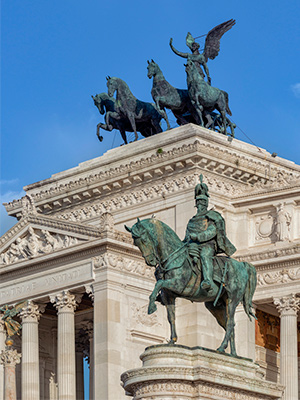
And there’s more! The structure that dominates Piazza Venezia also exhibits a complex iconographic programme, with representations of the virtues of the Italian nation, its regions and the seas that surround it, as well as the concepts of liberty, thought and action, among others.
Since 1921, there has been a special place dedicated to the remains of an unknown soldier who died during the First World War. The tomb has become a symbol of all of those who have died in the name of the homeland and it is positioned below the equestrian statue. You can’t miss it since it is flanked by eternal flames and guarded by two soldiers.
The secrets of the ‘Altare della Patria’
Despite the polemic nature of the Victor Emmanuel II Monument, there’s no denying that its dimensions can impress pretty much anyone. However, whilst it is true that this city-centre monument is particularly large, its dimensions are not the only reason you should go and see it.
The Central Museum of the Risorgimento.
If the view of the Victor Emmanuel II Monument from the outside is not enough for you, you can find much more inside. For example, the Central Museum of the Risorgimento. There is an entrance fee and it is open every day of the year. Inside, you will find a number of rooms that use flags, weapons and characters such as Garibaldi and Victor Emmanuel himself to tell the tale of Italian unification.
Panoramic views from the terrace.
If what you’re looking for are some amazing views, then head to the terrace. If you pay the corresponding fee, you can take lifts with a view up to the floor with the chariots. They are open all week and, whilst it’s not cheap, you’ll love the view of the city.
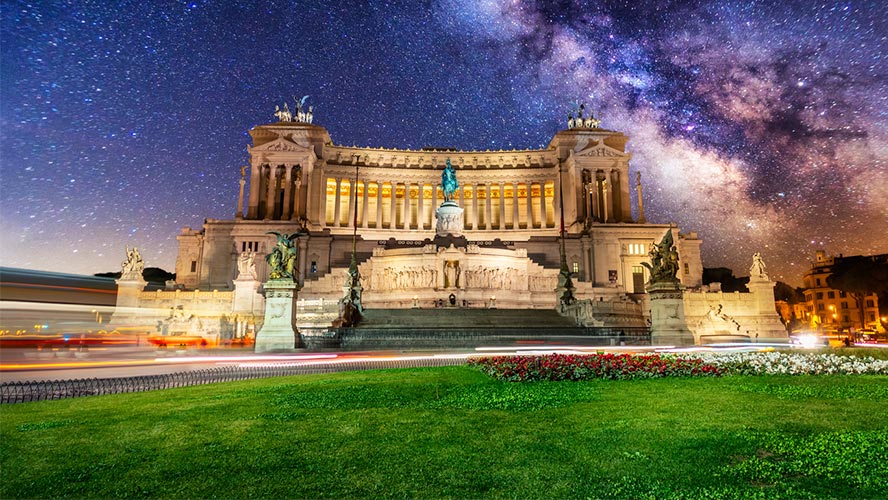
Piazza Venezia: pure luxury
In addition to the Victor Emmanuel II Monument, there are also other buildings in Piazza Venezia and you might like to visit them, too. It is hard to deny the beauty of the palace (Palazzio de Venezia). It is now a National Museum but it was famous for being the official residence of Mussolini during the dictatorship.
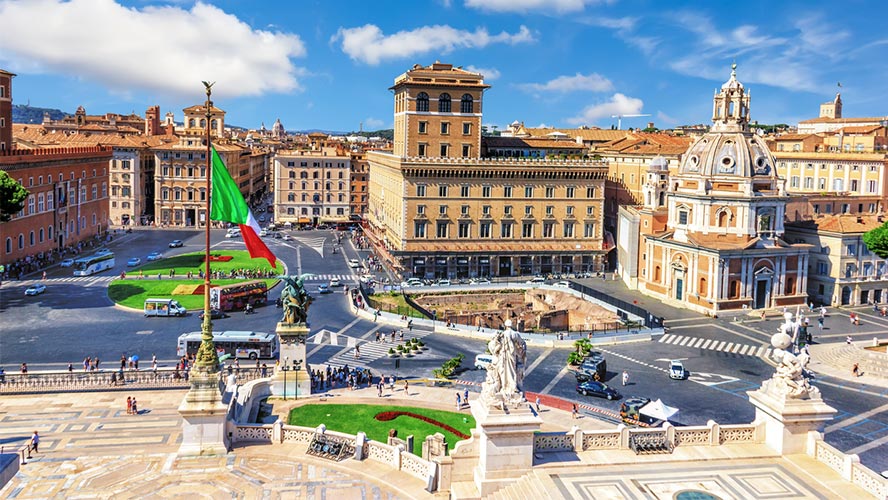
You do not need to leave the Piazza Venezia to enjoy St. Mark’s basilica, the church of the Venetians in Rome. One of the main attractions of the basilica is the bust known as Madame Lucretia that you will find right at the entrance. If you have had the opportunity to visit the statue of Pasquino in Piazza Navona, you might have already heard about it. This is because both of them are part of what are known as the ‘talking’ statues onto which, many centuries ago, citizens would attach posters voicing their grievances.
Aside from the emblematic buildings surrounding the Victor Emmanuel II Monument in Piazza Venezia, the location itself is rather strategic. Just a few minutes’ walk away, behind the memorial, you will find the popular Piazza Campidoglio and the Roman Circus, the Colosseum and mount Palatino. In other words, a direct route to Roman culture!




































































